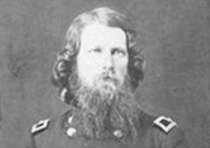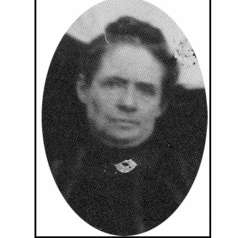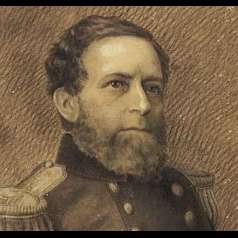
Perhaps no one soldier had more effect on the landscape of Civil War-era Tennessee than James St. Clair Morton. A Philadelphia, Pennsylvania, native born in 1829, Morton was second in his West Point class of 1851. An engineer, Morton worked on several projects before the war, including the construction of Fort Sumter, and published several articles on fortifications. In June 1862, Gen. Don Carlos Buell appointed him chief engineer of the Army of the Ohio. When Gen. William S. Rosecrans replaced Buell later that year, Rosecrans created the Pioneer Brigade, three battalions of engineers, mechanics, and skilled laborers, under Morton’s command. The Pioneer Brigade worked in advance of the regular army to “[build] or [repair] roads, railroads, bridges, railways, fortifications, warehouses, etc.” To protect strategically significant Nashville, Morton designed and constructed a series of forts around the city. Of those, Fort Negley is Morton’s most recognized and sophisticated Tennessee fortification, completed in December 1862, with labor from 2,768 conscripted slaves and free blacks from a contraband camp nearby. Between 600 and 800 conscripts died during construction. The collection of Morton’s forts in and around Nashville, especially those on the south side of the city were critical in defeating Confederate Gen. John Bell Hood’s force during the Battle of Nashville on December 15 & 16, 1864. Construction and repair were not the Pioneers’ only contribution. They found themselves in the middle of the fight at the Battle of Stones River, December 31st, 1862, to January 2nd, 1863. Gen. Rosecrans initially ordered them to improve the fords over the Stones River, but formed them into the line of battle as Confederate forces attacked. Under heavy fire from Confederate batteries and sharpshooters, the Pioneers held the line. As darkness set in, Morton’s men and the attached artillery units repulsed the Confederates, their dead falling “within fifty paces of Morton’s lines.” At dawn, the enemy again attempted to flank Morton by heading for a gap between the Federal line and the Murfreesboro Turnpike. Morton quickly occupied the gap and, after a heated fight, held the line. Forty-eight Pioneers lost their lives in the battle.
Tools
Key Facts
- Worked on construction of Fort Sumter
- Designed and built a series of forts around Nashville, including Fort Negley, that were critical in defending the city during thee battle of Nashville
- Saw action at Stones River







